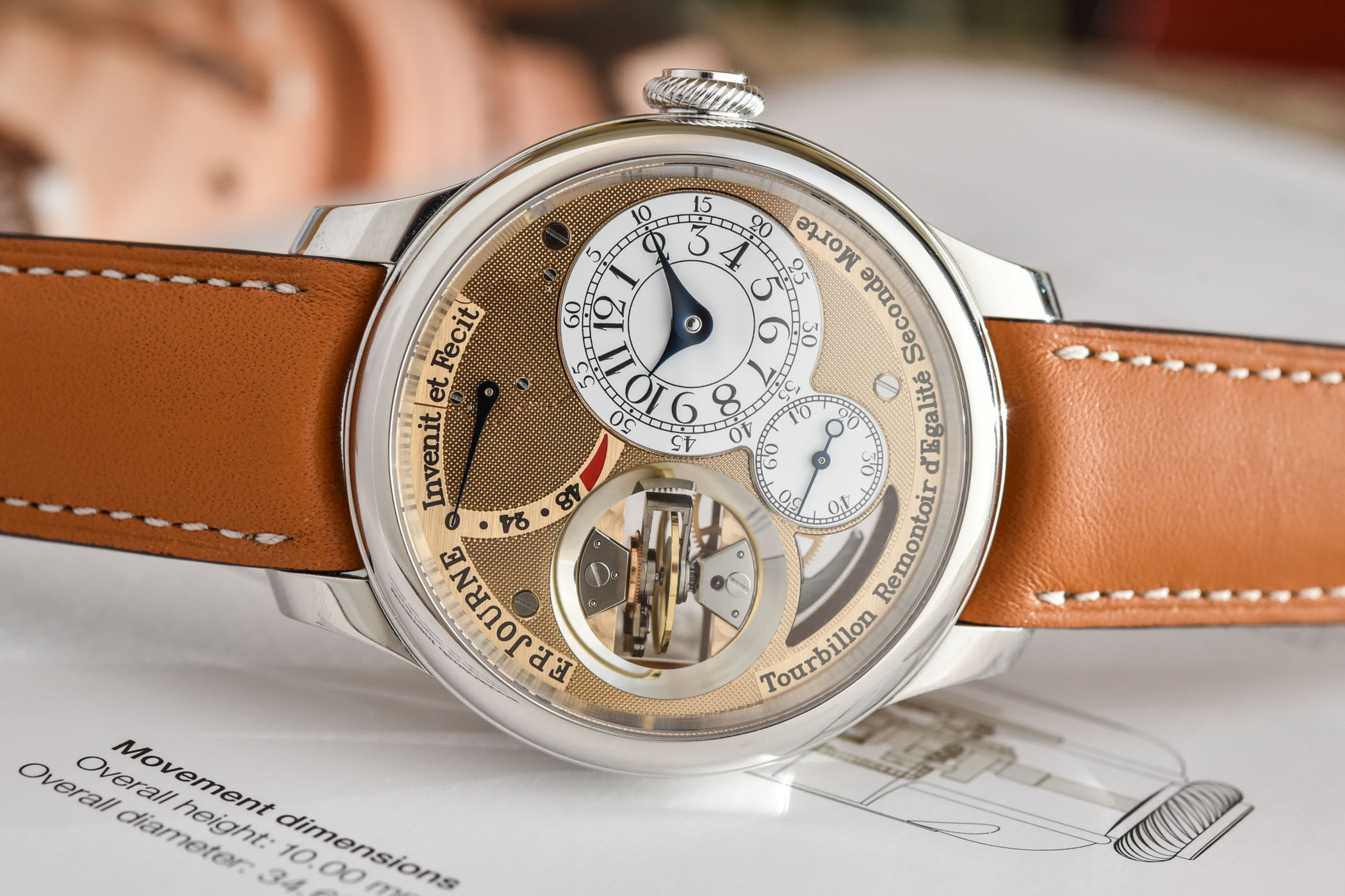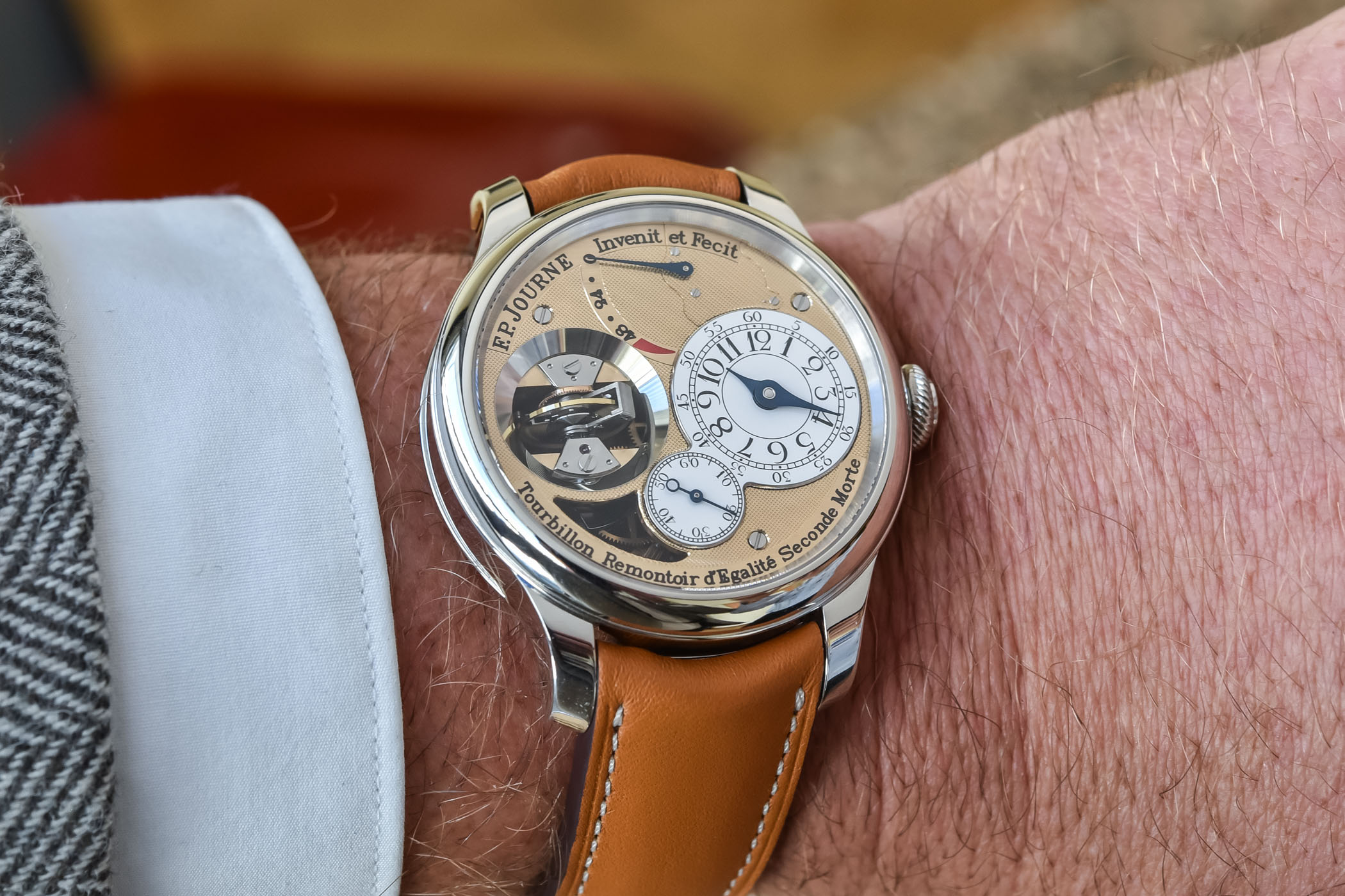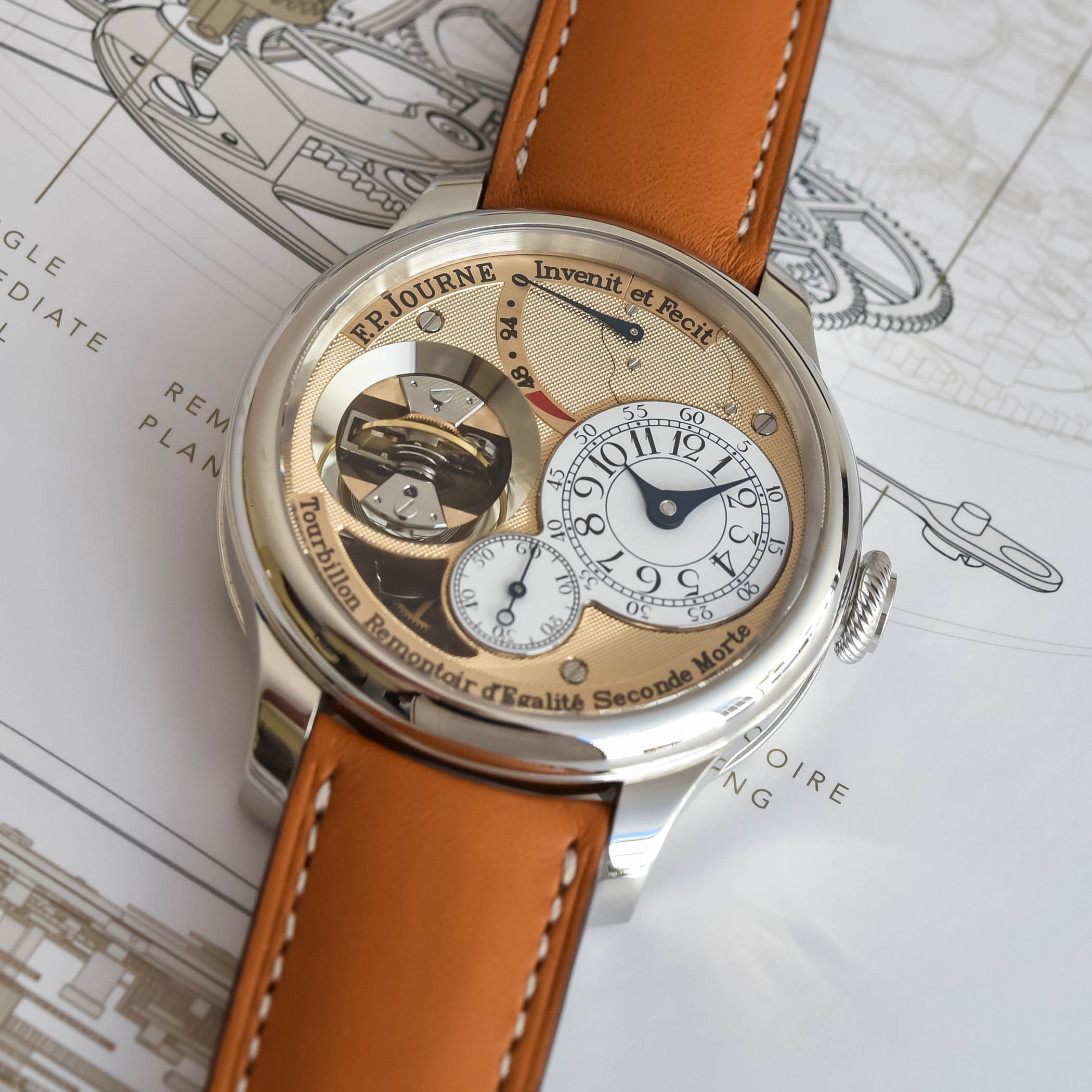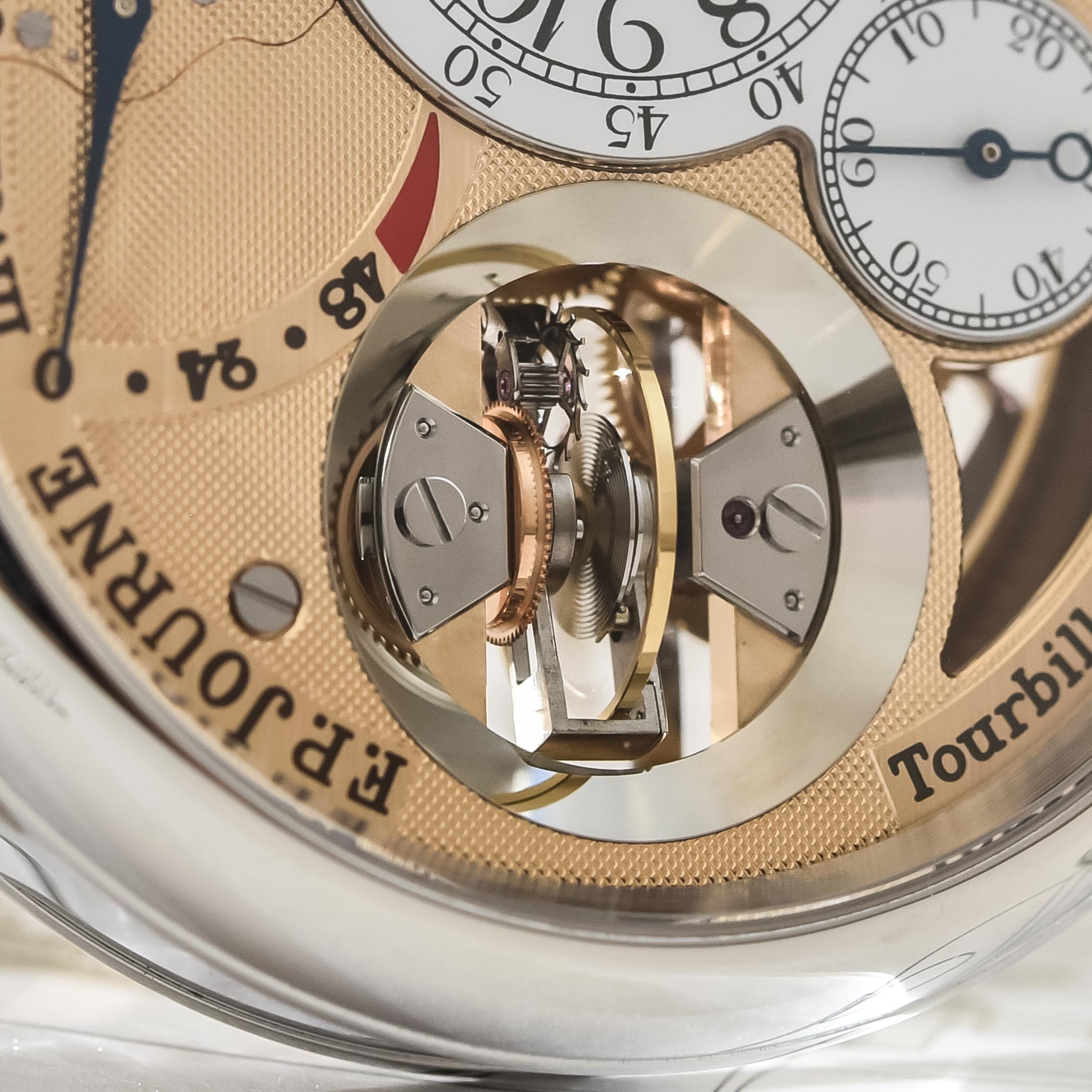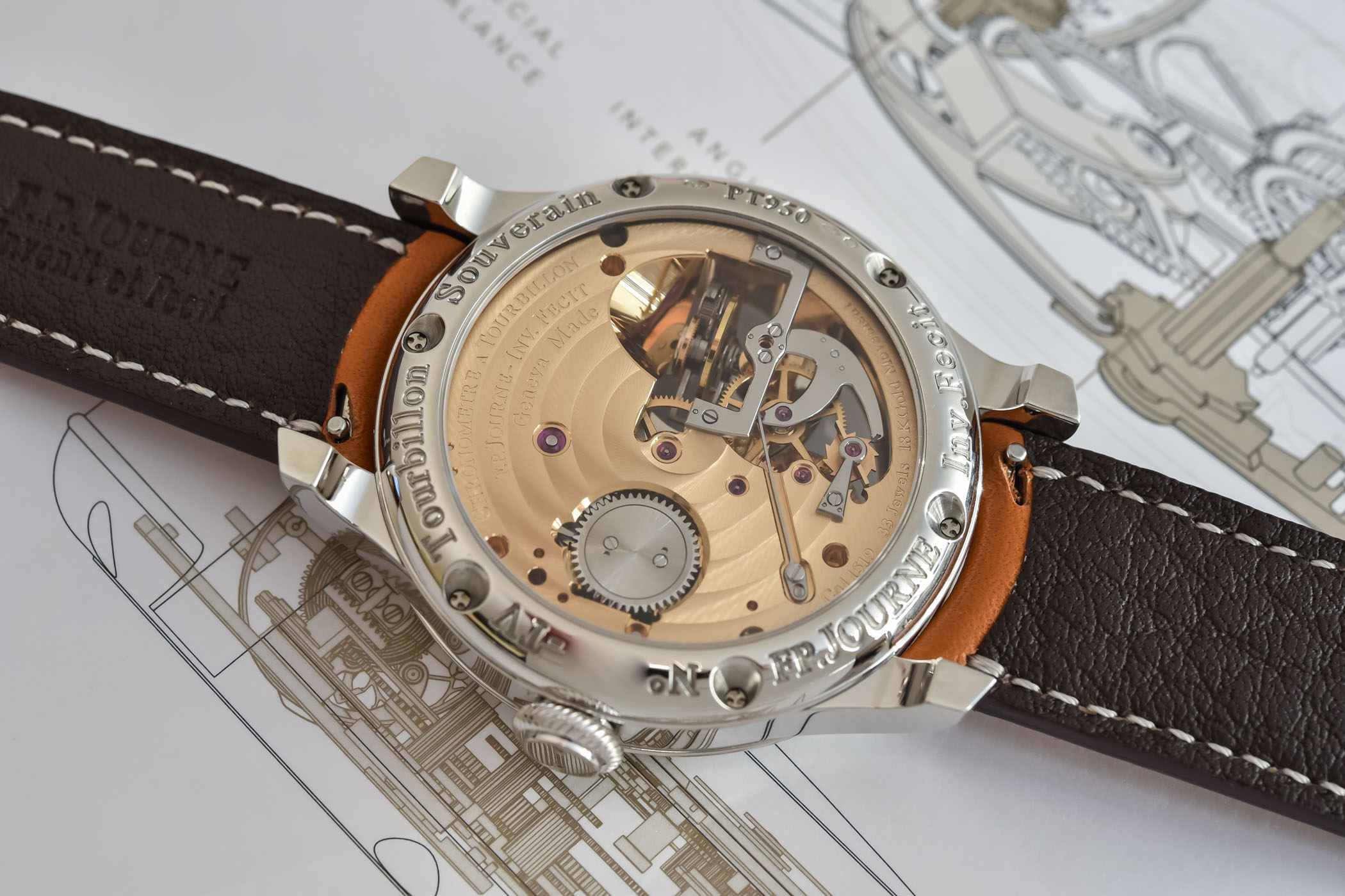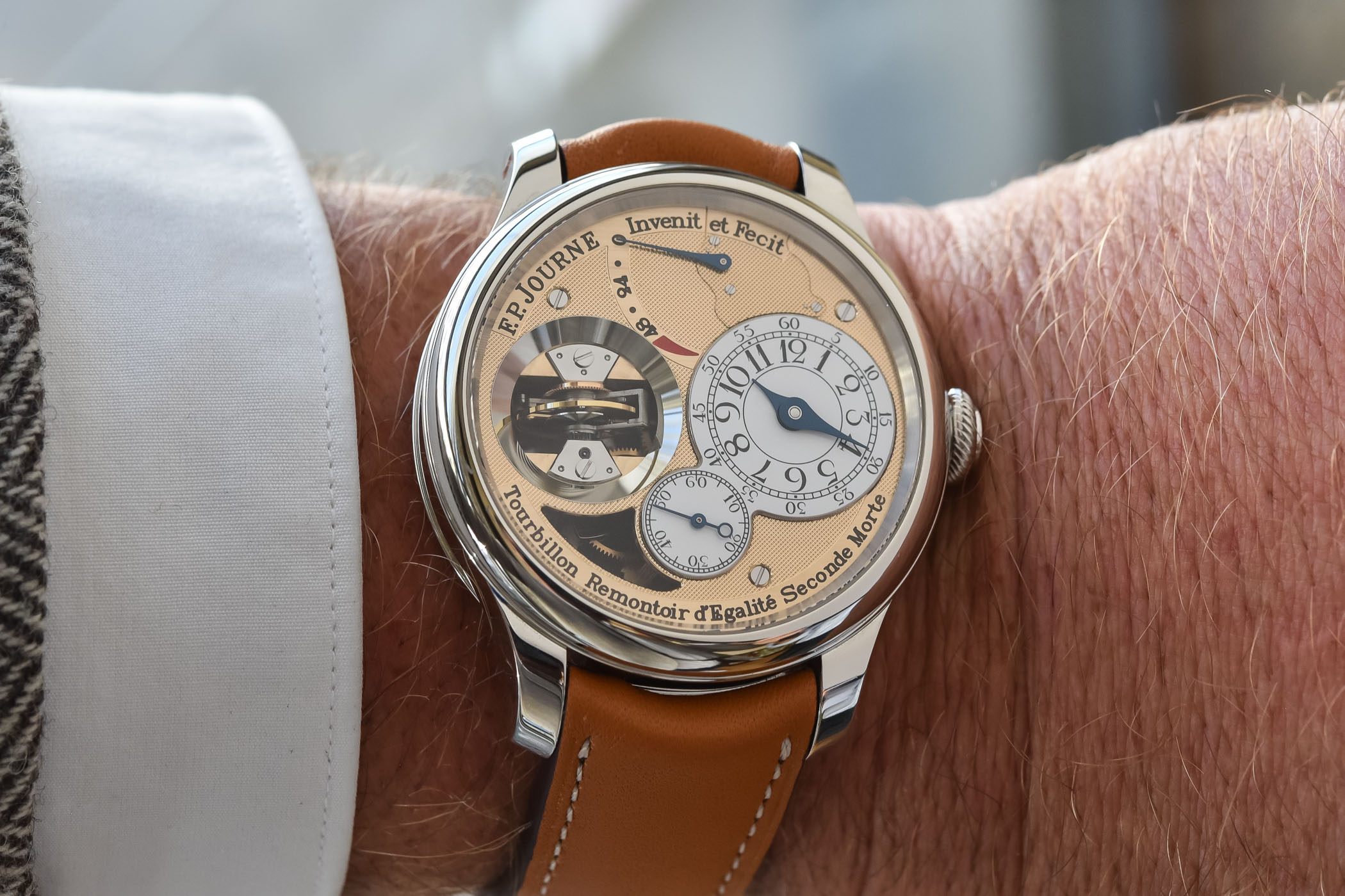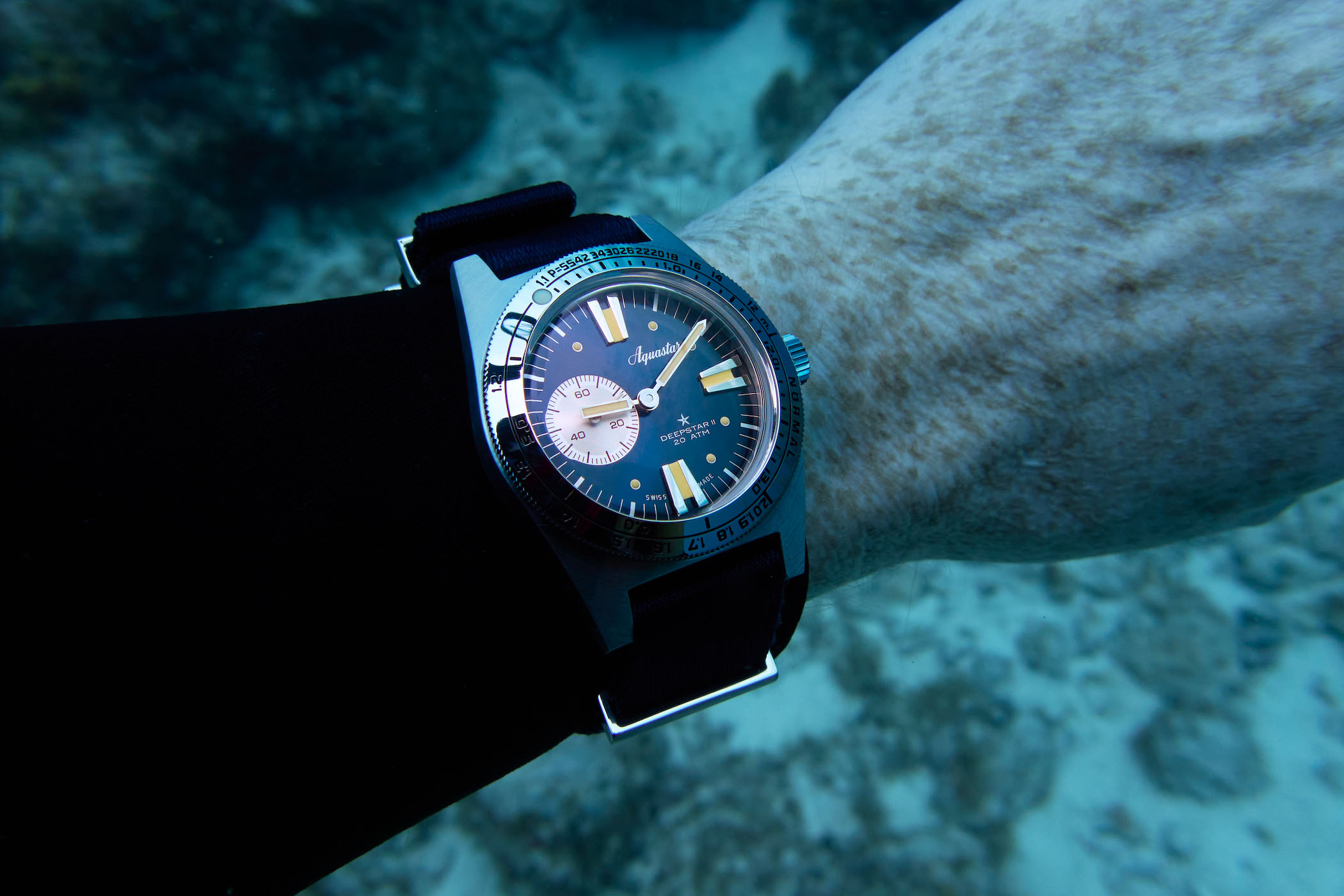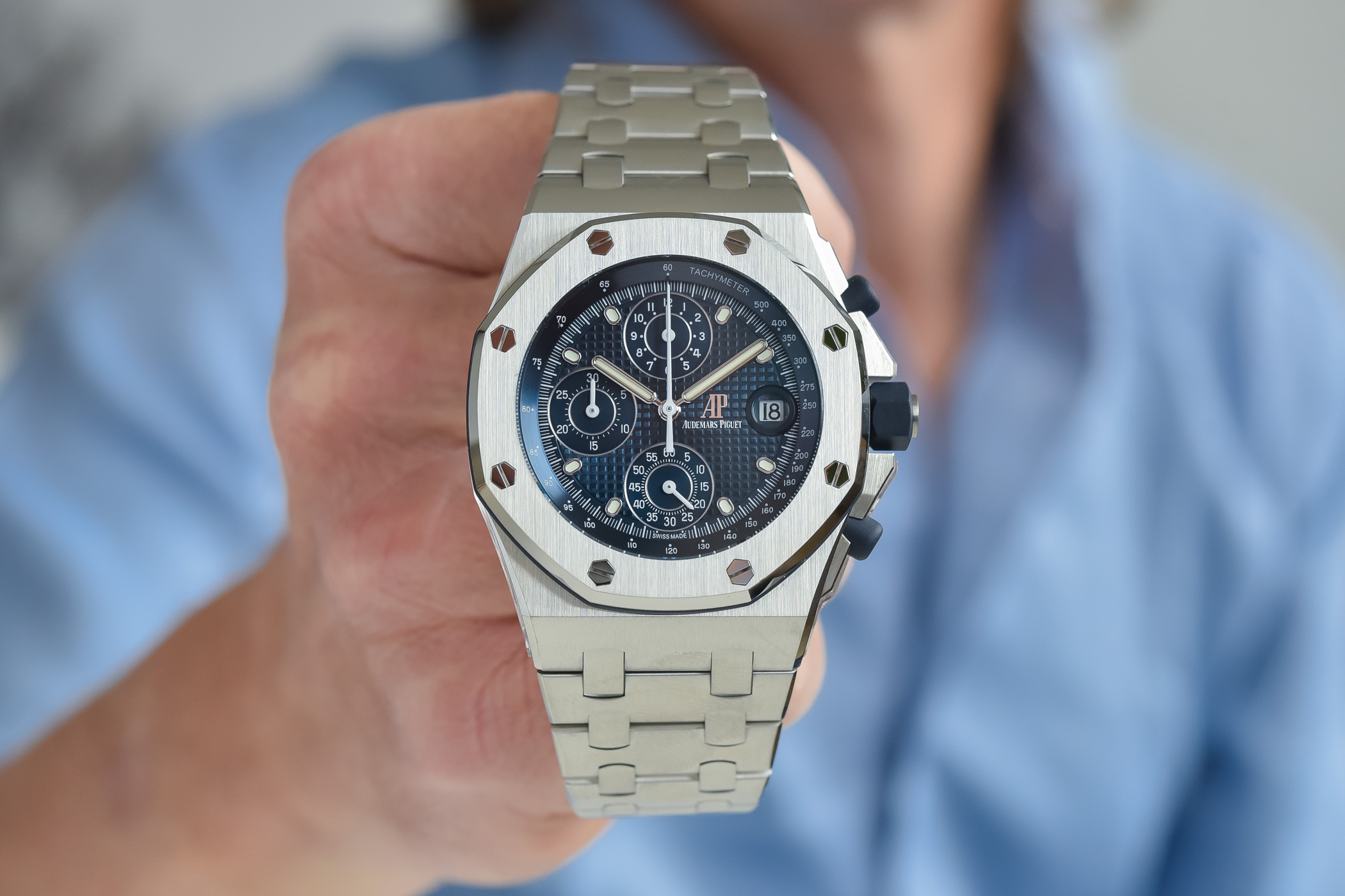The F. P. Journe Tourbillon Souverain Vertical
A tribute to François-Paul Journe's earliest watches... with a twist.
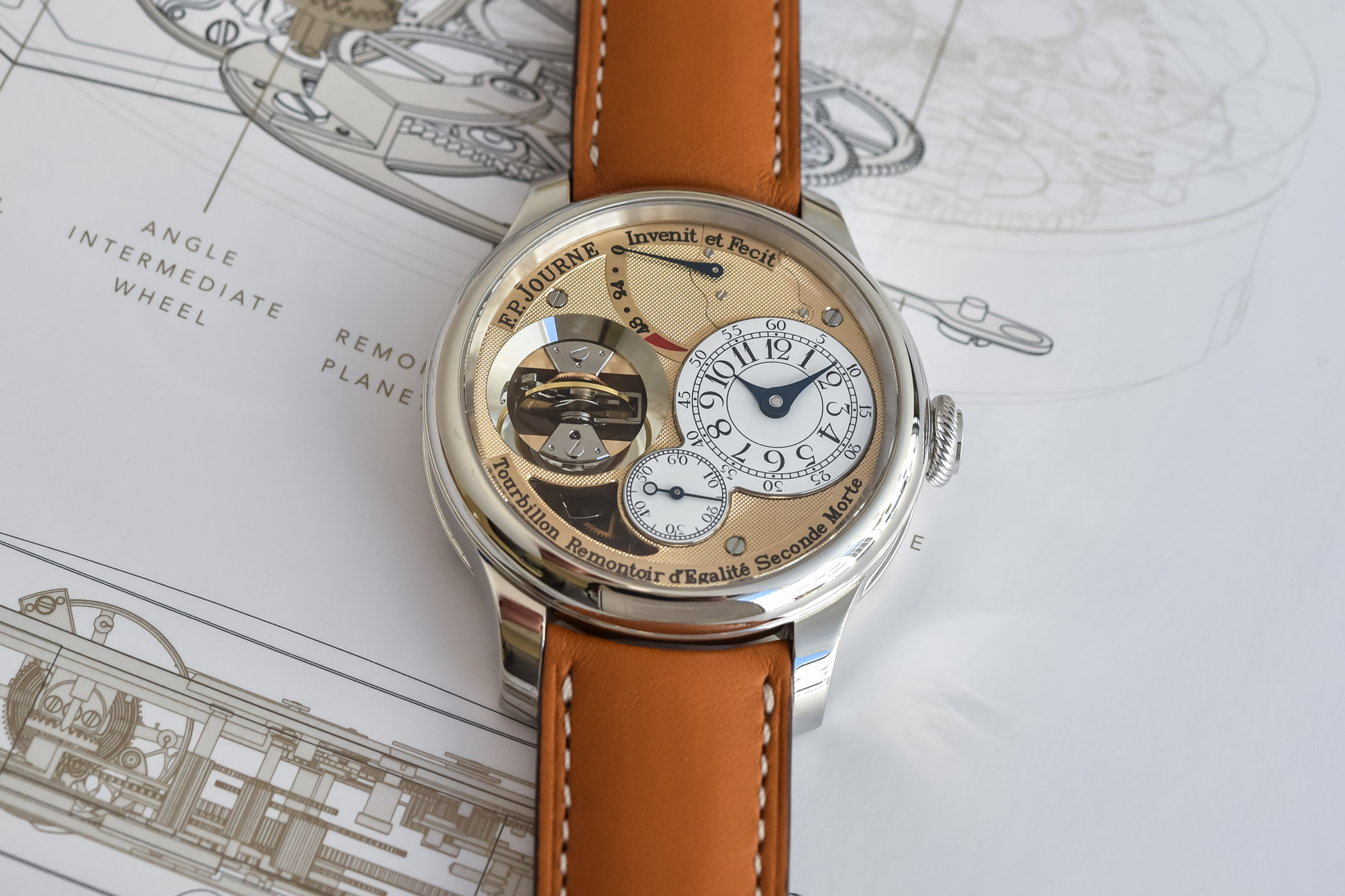
François-Paul Journe is, without a doubt, one of the most influential independent watchmakers of our times. A man known for his strong character and his inventiveness, he has gained recognition among his peers (as a member of the AHCI) and from the collecting community. The Frenchman is also known for his passion for chronometry and traditional horology, having spent a lot of time studying the works of Janvier, Breguet and Daniels. Without surprise, Journe’s earliest watches were focused on chronometric results and featured a tourbillon. Continuing this quest for accuracy, F. P. Journe has recently launched a new, somewhat surprising take on his signature combination of constant force/anti-gravity watch with the impressive Tourbillon Souverain Vertical.Â
The Tourbillon, a signature watch of F. P. Journe
Following his diploma in 1976, François-Paul Journe spent some years working with his uncle Michel on the restoration of extremely complex and historically important pocket watches, including watches from Sir Cecil Clutton’s collection and tourbillon pocket watches from A.L. Breguet and George Daniels. He also worked on the restoration of the Breguet No. 3177, a clock working on the concept of resonance and now kept in Arts et Métiers Museum in Paris, which might have been the trigger for the conception of the F.P. Journe Resonance wristwatch.
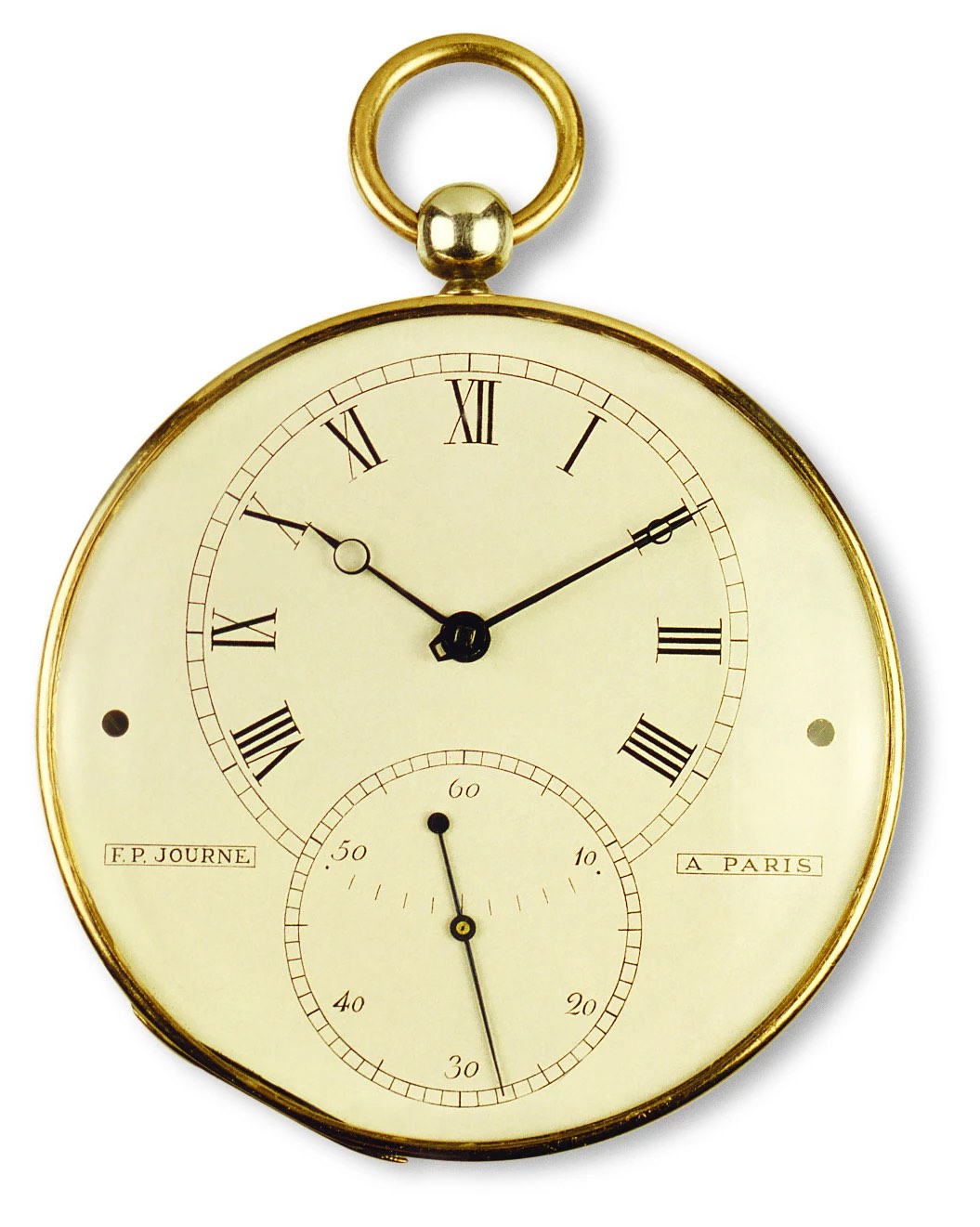
But besides working with his uncle, Journe was moved by a desire to “invent and make” (Invenit et Fecit) himself and started work on his own pocket watch in 1978. And by January 1983, at the age of 25, François-Paul Journe had completed his first self-made watch and movement. This pocket watch was already equipped with a tourbillon regulator, a double-barrel architecture and a detent escapement. In 1985, Journe opened his own workshop and started to create movements and pocket watches commissioned by demanding clients. However, until then, Journe had only produced timing instruments to be worn in a pocket or to display on a table. It wasn’t until 1991 that the first F.P. Journe wristwatch would see the light.
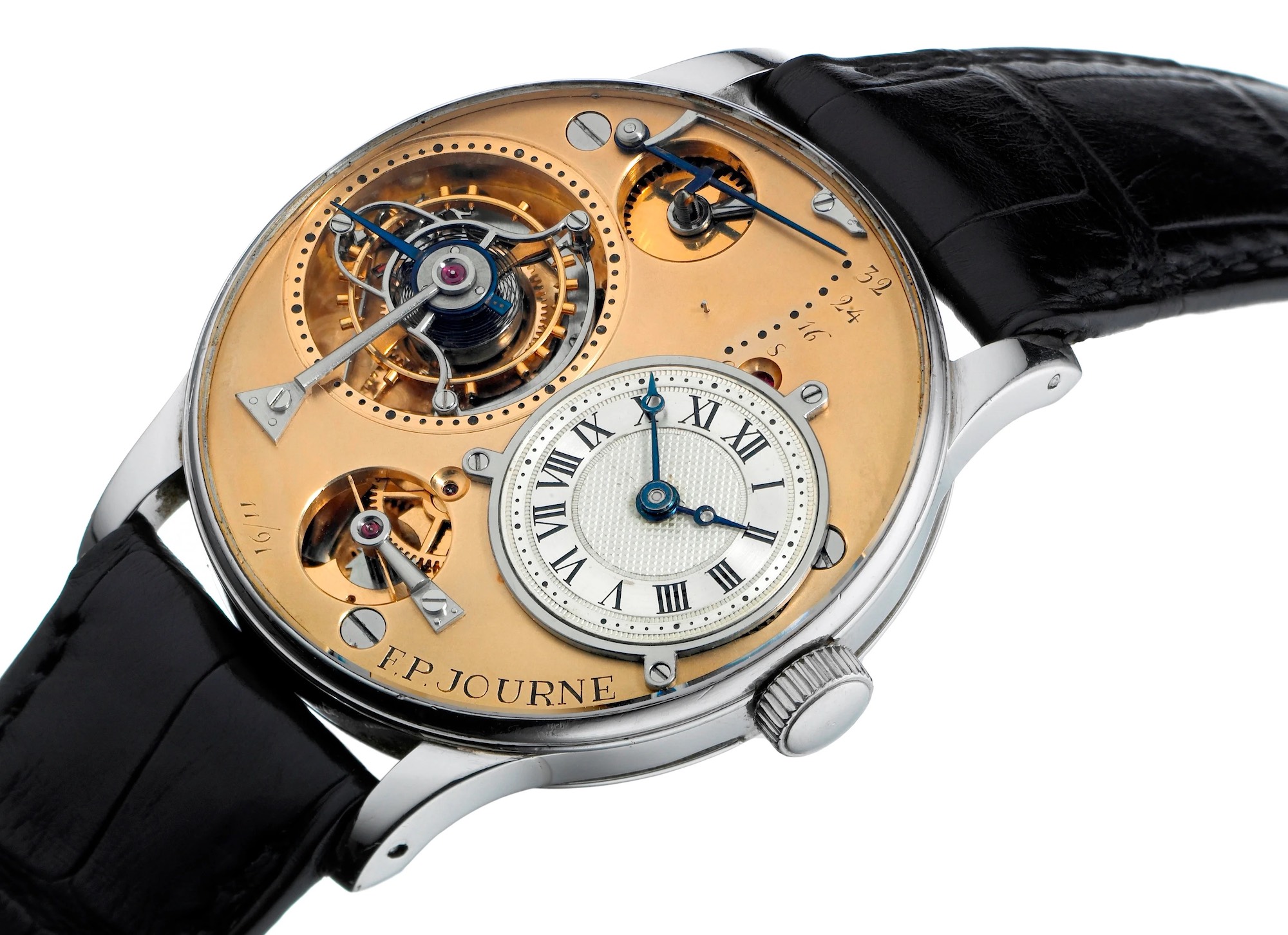
As you might expect, François-Paul Journe’s earliest wristwatch was equipped with a tourbillon regulator, but also with another rare complication that would become a signature element of many of his future watches: a constant force device known as a remontoir d’égalité. Completed in 1991 and numbered 11/91 on the dial, this watch became the foundation of everything the brand F.P. Journe is today in terms of design, execution and collection. This watch, which later gave birth to the Tourbillon Souverain, is fundamental in the brand’s relatively short history. The watch was exhibited at the AHCI booth at Baselworld the same year and was extremely well received by the watchmaking community. And something that shouldn’t be overlooked is that this marked the first time this constant force mechanism was integrated into a wristwatch – once again revealing young F.P. Journe’s interest in complex and historic chronometric solutions.
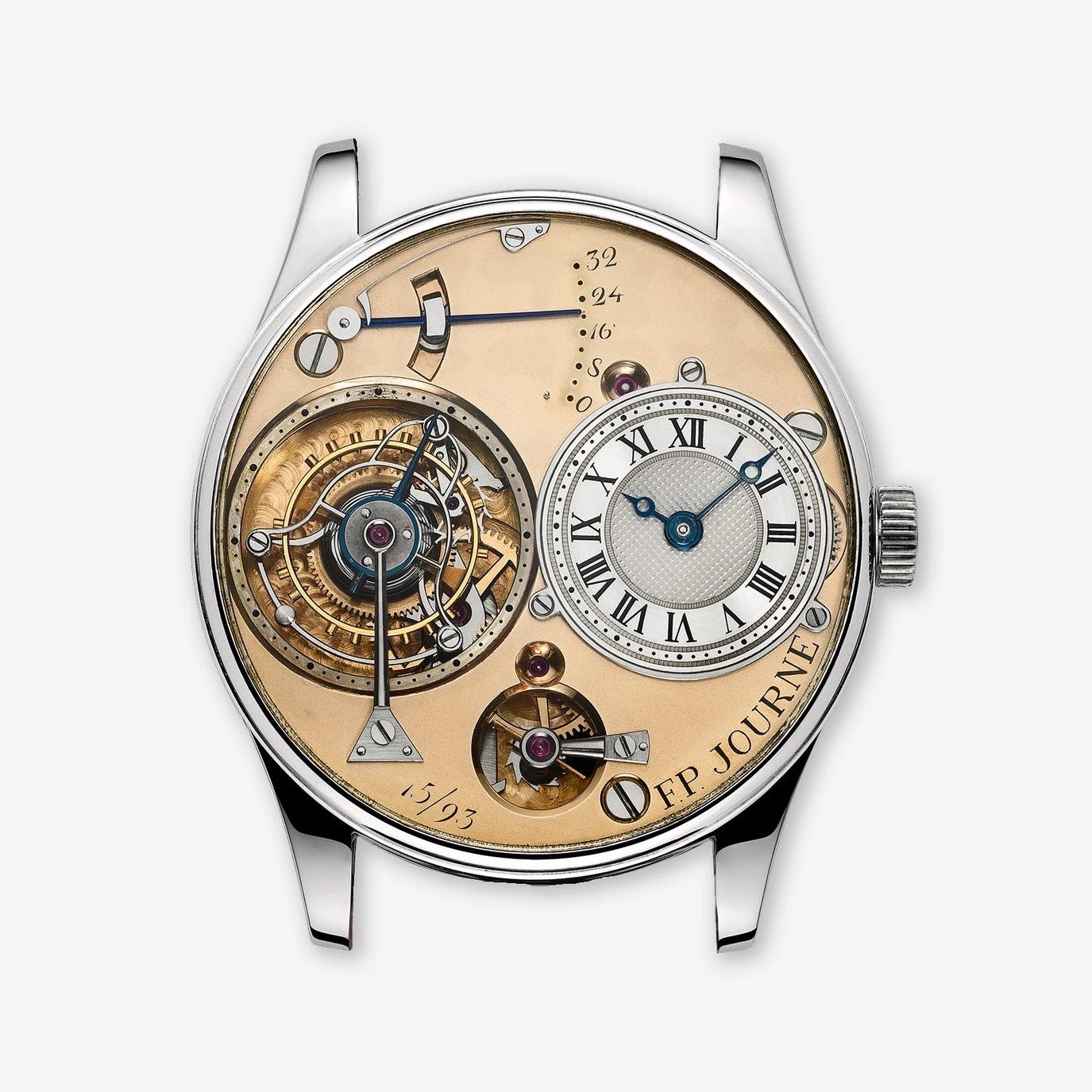
The F.P. Journe Tourbillon prototype already featured many design and construction elements that would later define most watches of the brand. The watch was made of platinum, with a simple, clean and deliberately simple case, so the focus was entirely on the movement, the complications and the display. The movement, entirely made by hand, was made in solid gold. There was no dial, in the strict sense of the word, covering the movement. Instead, the watch showed apertures for both the tourbillon and the remontoir d’égalité, as well as an off-centred dial for the hours and minutes on the right side of the watch. As Osama Sendi (The Journe Guy) explained to A Collected Man, this display “was done so that he could discreetly glance at the time, by letting the watch protrude slightly from under his cuff, and therefore not appear rude when checking his watch in the company of others“.
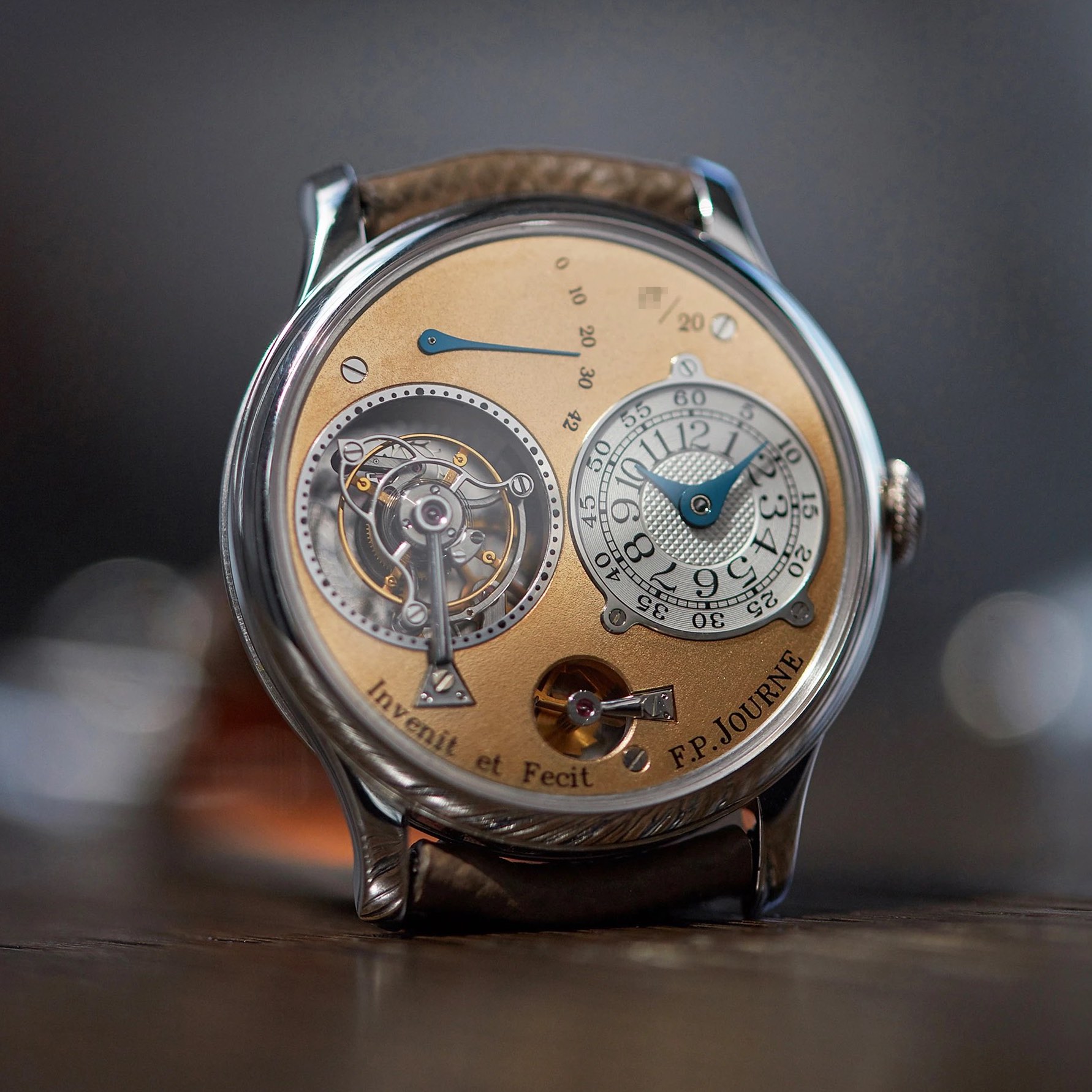
There were three prototypes of this tourbillon watch – the last one pictured above and numbered 15/93 – until F.P. Journe created his eponymous brand and a series of watches known as the Souscription Tourbillon. Back then, even more than today, creating an independent watchmaking brand and workshop wasn’t an easy task. So the idea of the subscription model arose to attract more potential clients. Early subscribers got a discount on the future retail price in exchange for their patience. This allowed François-Paul Journe to cover his costs and to produce more watches to later be sold at a normal price. The subscription campaign started in 1998, and the 20 first Souscription Tourbillon watches were delivered throughout 1999.
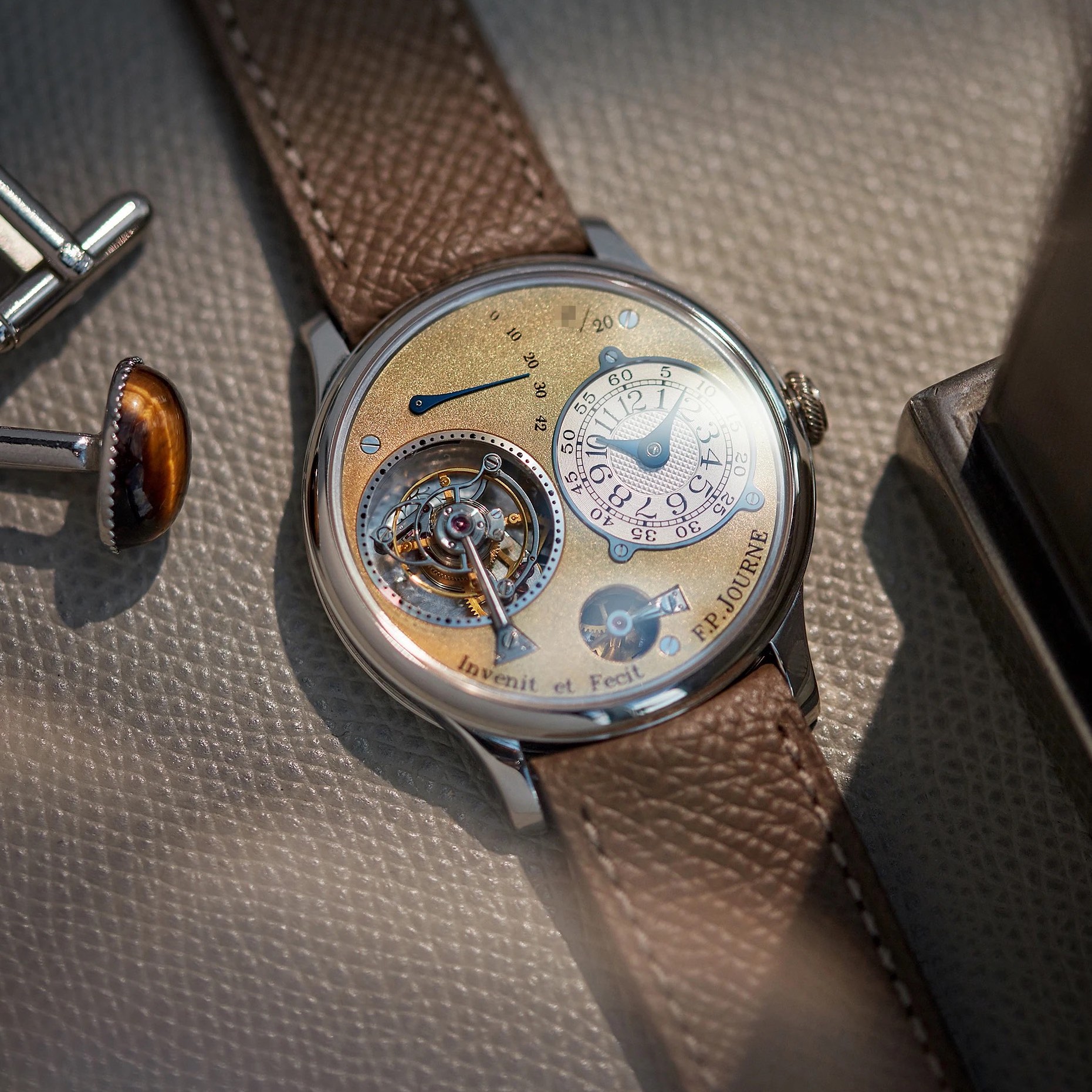
These early watches were very close in style and concept to the first production Tourbillon Souverain – first generation, from 1999 to 2003. They had the same layout as the prototype models, with the tourbillon on the left, a more refined power reserve on top and an off-centred dial at 3 o’clock. Yet, the movements were made of brass and rhodium-plated and housed in a 38mm platinum case. And following these early subscription models, the classic Tourbillon Souverain – whether with a rhodium-plated or a solid gold movement, in various case sizes, later with the Natural Dead Seconds function (2003 to 2019) – would become a cornerstone of the brand’s collection. It wasn’t until 2019, to celebrate the 20th anniversary of the watch, that F.P. Journe decided to revamp his signature tourbillon watch from head to toe with the introduction of the Tourbillon Souverain Vertical we’ll be looking at now.
The F. P. Journe Tourbillon Souverain Vertical
After 20 years of many iterations of the Tourbillon Souverain wristwatch that all, to some extent, displayed the same construction (purists and fans of the brand will kill me for that, but yes, all of these watches were more or less based on the same concept), F.P. Journe decided it was time for its signature tourbillon with remontoir d’égalité to adopt a new design, a new layout, a new architecture and basically, a whole new movement… plus something quite original when it comes to the position of the tourbillon itself. Indeed, as indicated by its name, the anti-gravity system was now placed vertically into the watch, which is obviously not something you often see in watchmaking. But more on that later.
Although this new take on the Tourbillon Souverain is radically different, bold in its execution and dimensions, it still feels familiar. There is something undeniably Journe in this watch, something that echoes the style of the earliest tourbillon and souscription watches, a certain roughness and prototype feel to the dial and its execution as if this watch was still experimental. And it certainly was deliberate.
The F. P. Journe Tourbillon Souverain Vertical is, when it comes to the case design, a watch without surprises. Available either in 18k red gold or in 950 platinum, like the model presented here, the case is entirely in line with the rest of the brand’s production when it comes to shape. A domed bezel, a large dial opening, strong lugs, a fully polished finishing and a flat crown are all classic FPJ traits. What’s less traditional is the size of this tourbillon watch, which measures 42mm in diameter and 13.60mm in height. The architecture of the movement is responsible for these measurements, which is still surprising for a brand that has often made thin yet complex watches. The previous Tourbillon Souverain watches were all in the sub-10mm category.
Something that echoes the earliest models designed and manufactured by François-Paul Journe is the dial and how it is constructed and finished. Like the Souscription and prototype models, this Tourbillon Souverain Vertical has no dial in the classic sense of the word and instead exposes its movement as the base for the display. Indeed, the visible gold background, which is finished with a Clous de Paris guilloché pattern, is the base plate of the movement – and naturally, it is made of solid 18k rose gold. Screws are apparent, so are the connections between the different bridges. But this technical-looking base is the canvas for a typically Journe display. A tourbillon at 9 o’clock, the power reserve on top, an off-centred dial for the hours and minutes at 3 o’clock and the deadbeat seconds at 6 o’clock… All of that is emblematic of the Tourbillon Souverain watches.
While the design might have lost a bit of the classic elegance of previous iterations, the watch is nevertheless exceptionally well manufactured and retains most of the distinctive elements that have made F.P. Journe watches recognisable and unique. Yet, with some evolutions. The classic blued steel hands now indicate the time on solid white gold dials that are, for the first time, covered in white enamel. Also, the position of the power reserve has been reversed. And finally, there is this massive, angled hole to house this unusual vertical tourbillon. Knowing that this position would have reduced the attention on the regulating organ, the brand decided to create a focal point by means of a cone-shaped mirror-polished ring that concentrates light, reflecting the tourbillon cage. A point of gravity to house a device aimed at counteracting gravity… I find a certain irony in this construction that reminds me of the spirit of its creator.
Let’s now move to THE pièce de resistance, the vertically mounted tourbillon. Why such a construction? Well, from the words of the man behind the watch: “I designed this vertical tourbillon so that the tourbillon’s functions remain constant whether the watch lies flat or is placed on its band, and the amplitude is the same, whether using a deployant clasp or an ardillon buckle.” The very idea of a tourbillon is to counteract the effect of gravity by ensuring that the regulating organ constantly changes position. While on a pocket watch the flat position of the cage was induced by how the instrument was worn, a wristwatch, on the other hand, is far more often flat – whether on the wrist or on a desk. The idea of this vertical position comes from this observation and ensures that the device plays its role. And importantly, this tourbillon makes one revolution every 30 seconds, faster than the conventional time of one minute.
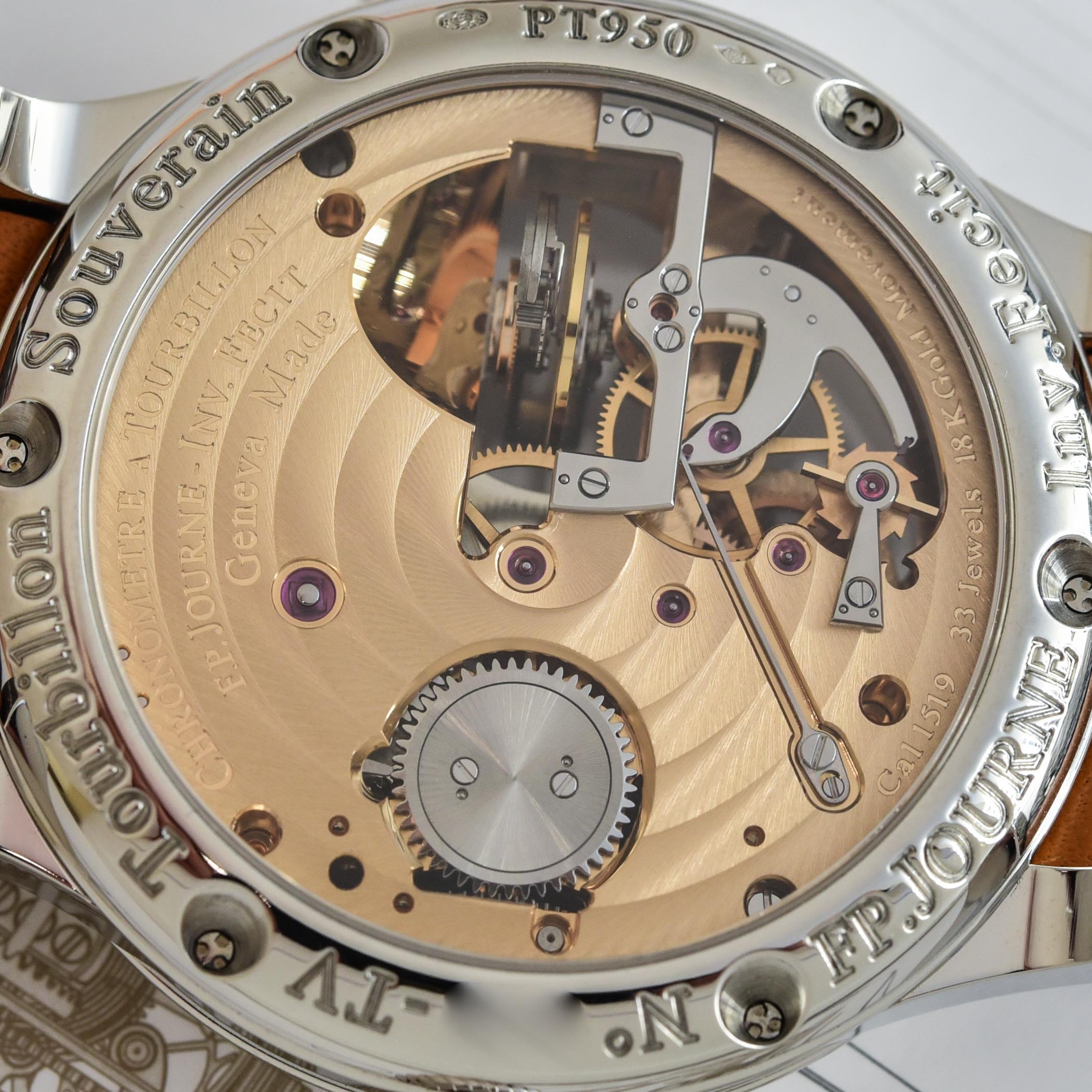
But there’s more to this Tourbillon Souverain Vertical than its regulating organ. Traditional to Journe, it is fitted with a system that aims to equalise the force reaching the escapement, a constant force device known as a remontoir d’égalité. First invented during the 15th century by watchmaker Jost Bürgi, the constant force device fell into oblivion after Christiaan Huygens’ invention of the balance spring and the pendulum, giving movements an unprecedented degree of precision timekeeping. Yet, during the 18th century and the growing need for ultra-precise clocks for astronomical observations and calculations of longitude, the constant force device came back into vogue with watchmakers Thomas Mudge and Robert Robin. While it was still used in clocks, for most of the existence of wristwatches, the constant force device remained unheard of until F.P. Journe reintroduced it in his tourbillon watch – a first for the industry.
The constant force device used by F.P. Journe is still the same remontoir d’égalité. While the energy from the mainspring gradually decreases as it unwinds, affecting the accuracy of the regulating organ due to the lower torque it receives (less amplitude), the remontoir d’égalité smoothens the delivery of torque by adding a spiral spring attached to the gear train, and that periodically loads and unloads to deliver (theoretically) the exact same amount of torque to the escapement. For this Tourbillon Souverain Vertical, the remontoir is rewound as frequently as once per second, and as such, also acts as a natural deadbeat second, which is displayed in the sub-dial at 6 o’clock. Being mounted on one of the wheels of the constant-force device, this deadbeat second cannot in any way affect the precision of the watch.
The rest of the movement is as impressive and superbly finished. The in-house calibre F.P.Journe 1519 has 18k rose gold plates and bridges finely decorated with circular Geneva stripes, polished bevels, polished and bevelled screw heads, black polished steel parts and perlage. An interesting element, the vertical tourbillon is also equipped with a second reflector, which was created on the movement side to provide light around the tourbillon cage, as well as providing a better view of its motion. This hand-wound movement features a free-spring balance with four inertia weights that beats at 3Hz, a flat Anachron balance spring with a Phillips overcoil, and its mainspring can store up to 80 hours of power reserve.
Thoughts
In innovating with this new architecture for the tourbillon, yet by implementing known solutions such as the constant force remontoir d’égalité with a natural deadbeat second, as well as a layout that remains true to the origins of the tourbillon wristwatch, F.P. Journe shows an evolution that feels natural and bold. Not the kind of mature watch you’d have expected, rather something closer to a re-invention of a concept, without denying its origins. What surprises me most is the combination of classic design elements and a certain prototype feel, resulting from the lack of a proper dial and the more polarising features like the relatively large size and the tourbillon housed in a “cone of light.” Clearly, F.P. Journe didn’t play the consensual role here, but the result is, without a doubt, quite stunning – visually and technically.
Availability & Price
The F. P. Journe Tourbillon Souverain Vertical replaces the classic Tourbillon Souverain watches in the permanent collection and isn’t limited in numbers – yet production remains on low levels. It is available in 18k red gold or 950 platinum, priced at CHF 243,900 and CHF 247,800 respectively.
For more details, please visit www.fpjourne.com.

